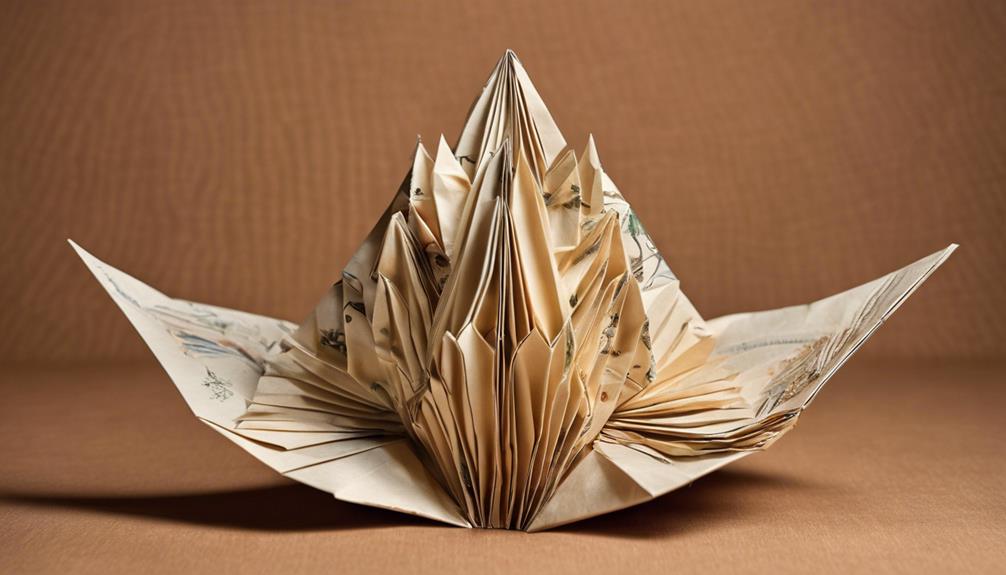Madhya Pradesh's museums house intriguing hidden gems showcasing the state's rich cultural tapestry. The State Museum of Madhya Pradesh, Madhya Pradesh Tribal Museum, Jai Vilas Palace Museum, and Gwalior Fort Archaeological Museum hold unique artifacts, intricate tribal masks, and traditional art forms. These repositories offer interactive learning experiences, engaging visitors with hands-on exhibits and educational initiatives. Explore the museums to discover diverse tribal cultures and witness exquisite craftsmanship preserved over time. These hidden gems are sure to leave a lasting impression, unraveling the historical secrets and cultural heritage of Madhya Pradesh.
Key Takeaways
- Unearth diverse tribal artifacts revealing exceptional craftsmanship and cultural significance.
- Experience interactive displays offering immersive insights into Madhya Pradesh's rich heritage.
- Explore intricate details of traditional art forms, masks, and tools in the museums.
- Discover unique exhibits showcasing indigenous artistry and historical artifacts.
- Engage in educational workshops and initiatives to delve deeper into the state's cultural tapestry.
State Museum of Madhya Pradesh
Located in Bhopal, the capital city of Madhya Pradesh, the State Museum showcases a diverse collection of artifacts. This museum offers a window into the rich history and culture of the region through its extensive exhibits. Visitors can immerse themselves in galleries dedicated to archaeology, anthropology, and natural history, gaining a thorough understanding of Madhya Pradesh's heritage and traditions.
The State Museum of Madhya Pradesh houses a variety of artifacts, including sculptures, paintings, coins, and manuscripts, providing valuable insights into the cultural and historical evolution of the state. Through these artifacts, visitors can trace the development of art forms, societal practices, and technological advancements that have shaped Madhya Pradesh over the centuries.
Madhya Pradesh Tribal Museum
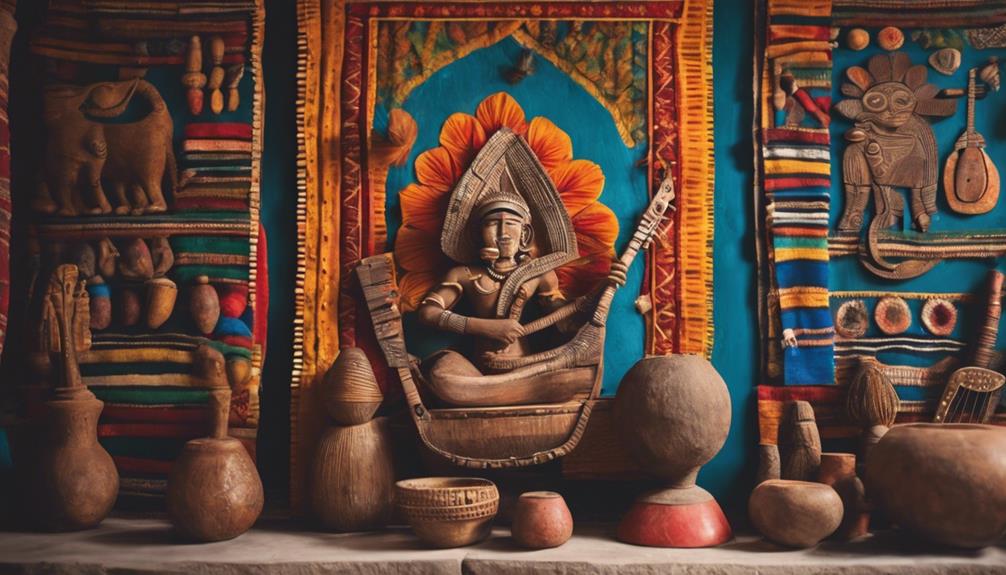
The Madhya Pradesh Tribal Museum showcases a rich cultural tapestry through its diverse collection of artifacts, traditional crafts, and artworks.
Visitors can immerse themselves in interactive learning experiences exploring tribal rituals, customs, music, dance, and attire.
The museum's aim is to preserve and celebrate the unique cultural identities of Madhya Pradesh's tribal communities, offering a fascinating insight into their history and artistic expressions.
Unique Tribal Artifacts
Showcasing a diverse array of tribal artifacts, clothing, and handicrafts, Madhya Pradesh Tribal Museum offers visitors a glimpse into the rich cultural heritage of various indigenous communities. This museum is a treasure trove of tribal artifacts, including traditional art forms, jewelry, and musical instruments that highlight the artistic skills and craftsmanship of tribal communities in Madhya Pradesh. Intricate tribal masks, paintings, and tools on display provide a unique insight into the customs and lifestyles of these indigenous tribes.
Visitors to the Madhya Pradesh Tribal Museum can marvel at the attention to detail and creativity evident in each artifact, showcasing the deep-rooted cultural heritage of tribal communities. The museum serves as a platform to preserve and celebrate the traditional art forms passed down through generations, offering a deeper understanding of the rich tapestry of tribal culture in the region. Through these unique tribal artifacts, the museum bridges the gap between the past and the present, honoring the legacy of tribal craftsmanship and creativity.
Cultural Heritage Displays
Visitors can immerse themselves in the vibrant cultural tapestry of Madhya Pradesh's tribal communities through the engaging displays at the Tribal Museum. This museum showcases the rich cultural heritage of various indigenous groups in the region, offering insights into their traditional artifacts and intricate artwork.
The exhibits provide a glimpse into the diverse traditions, customs, and rituals practiced by these tribal communities, allowing visitors to explore the unique handicrafts, musical instruments, and costumes that reflect their tribal identity. The Madhya Pradesh Tribal Museum serves as a platform to preserve and promote the indigenous art and culture of the tribal communities in the state, highlighting the significance of their heritage.
Interactive Learning Experiences
Explore the diverse tribal cultures of Madhya Pradesh through interactive learning experiences at the Tribal Museum. The museum offers visitors a chance to investigate traditional artifacts, art forms, and lifestyle exhibits that highlight the unique traditions of the region's tribal communities.
Through immersive displays, visitors can immerse themselves in the rich heritage and customs of Madhya Pradesh's tribal history, gaining insights into the rituals, crafts, and traditional practices that make these cultures so vibrant.
At the State Museum Of Tribal And Folk Art, interactive exhibits provide a comprehensive exploration into the fascinating world of the tribal populations in Madhya Pradesh. These experiences not only educate visitors about the traditional artistry of the tribes but also offer a glimpse into their way of life, fostering a greater appreciation for the diversity and cultural richness that defines these communities.
Jai Vilas Palace Museum
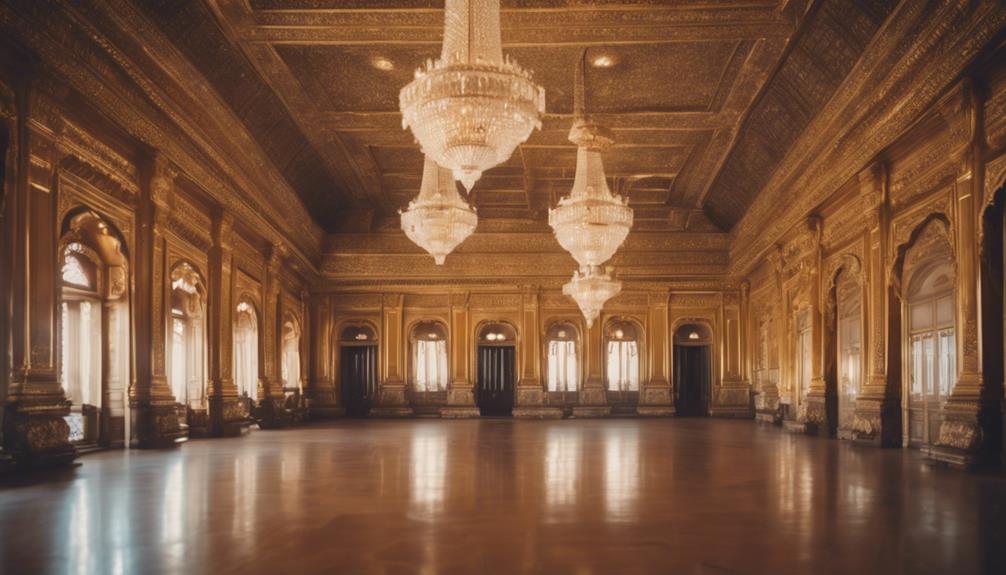
Nestled in Gwalior, Madhya Pradesh, lies a treasure trove of the Scindia royal family's opulent lifestyle – the Jai Vilas Palace Museum. This museum offers a fascinating journey into the extravagant world of Indian royalty, showcasing the grandeur and sophistication that characterized the Scindia dynasty. Visitors are treated to a remarkable collection of artifacts, including vintage cars and weapons, providing a window into the opulence of a bygone era.
One of the standout features of the Jai Vilas Palace Museum is the world's largest chandelier, a dazzling display of luxury that leaves visitors in awe. Additionally, the museum houses a unique silver train, further exemplifying the refined tastes and lavish lifestyle of the Scindia royal family. Each exhibit within the museum is meticulously curated to offer a glimpse into the rich history and cultural heritage of this esteemed lineage.
For those seeking to immerse themselves in the opulent past of Indian royalty, the Jai Vilas Palace Museum stands as a beacon of grandeur and elegance.
Indira Gandhi Rashtriya Manav Sangrahalaya

Indira Gandhi Rashtriya Manav Sangrahalaya stands out as one of the largest anthropology museums globally, spanning over 200 acres.
This museum offers a rich tapestry of tribal cultures and heritage from diverse regions of India. Visitors can engage with over 6,000 indigenous artifacts through interactive exhibits, preserving and showcasing the vibrant cultural history of India's tribal communities.
Unique Artifacts on Display
With over 6,000 artifacts representing India's cultural diversity, the Indira Gandhi Rashtriya Manav Sangrahalaya showcases a wide array of unique items for visitors to explore. The museum's collection at the Tribal Museum spans from tribal dwellings, agricultural tools, to traditional crafts, providing an in-depth exploration into the indigenous cultures of India. Visitors can marvel at 42 open-air exhibitions that vividly depict various indigenous lifestyles, immersing themselves in the rich heritage of these communities. Additionally, the indoor galleries house ethnographic collections, masks, costumes, and musical instruments, offering a detailed insight into the cultural tapestry of the region.
To provide a visual representation of the diverse artifacts on display, here is a glimpse into some of the unique items showcased at the museum:
| Category | Description | Origin |
|---|---|---|
| Tribal Artifacts | Intricately carved wooden masks | Central India |
| Cultural Costumes | Colorful handwoven garments | North-Eastern India |
| Traditional Crafts | Pottery and basketry items | Western Ghats region |
| Musical Instruments | Indigenous drums and flutes | Eastern India |
Cultural Heritage Preserved
The Indira Gandhi Rashtriya Manav Sangrahalaya in Bhopal stands as a tribute to the vibrant cultural heritage preserved within its vast grounds. As one of the largest ethnographic museums in India, covering over 200 acres, it offers a mesmerizing glimpse into the rich cultural diversity of Indian tribes and communities.
Within its walls, visitors can marvel at a collection of over 2,500 exhibits, including tribal artifacts, intricate handicrafts, and authentic traditional dwellings. This museum serves as a beacon of cultural preservation, with 42 open-air exhibition areas meticulously crafted to represent different regions and lifestyles across India.
It provides a unique platform for exploring the deep-rooted traditions and practices of various indigenous communities, shedding light on their customs and ways of life. Through its extensive displays and immersive experiences, the Indira Gandhi Rashtriya Manav Sangrahalaya offers a profound insight into the invaluable cultural heritage that defines India's diverse tapestry of identities.
Interactive Exhibits for Learning
Interactive displays at the Indira Gandhi Rashtriya Manav Sangrahalaya in Bhopal offer engaging opportunities for visitors to immerse themselves in tribal and folk art, culture, and heritage. The museum's hands-on exhibits provide an immersive learning experience, allowing guests to explore the intricacies of India's cultural diversity through artifacts and sculptures.
Through multimedia presentations and interactive programs, visitors can investigate the museum's diverse collections, gaining a deeper understanding of tribal and folk art. The educational value of the museum is further enhanced through workshops that explore the intricacies of India's cultural heritage.
This unique blend of interactive exhibits and educational initiatives makes the Indira Gandhi Rashtriya Manav Sangrahalaya a must-visit destination for those seeking to learn about the vibrant traditions and artistic expressions of India's tribal communities.
Gwalior Fort Archaeological Museum
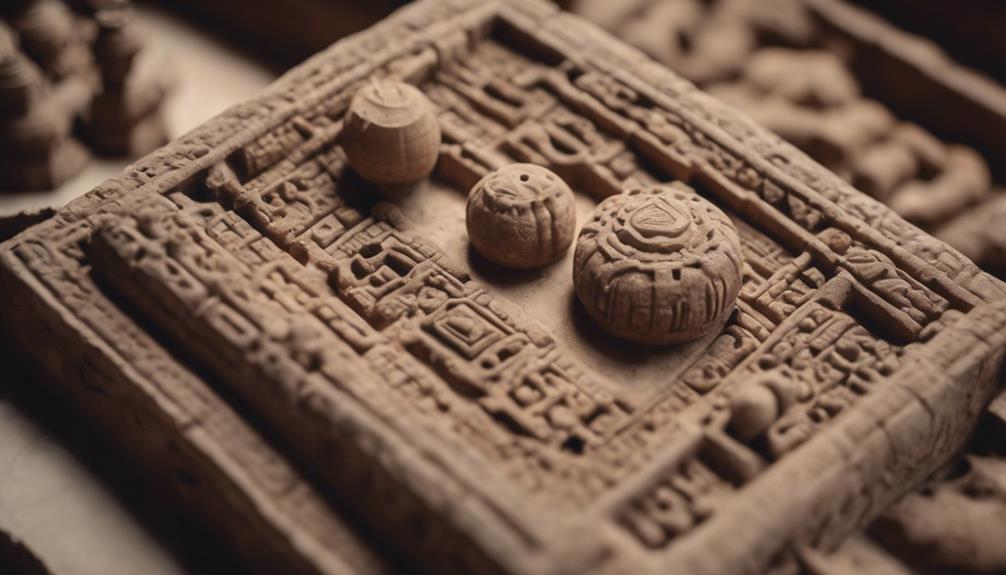
Housing a vast collection of artifacts, sculptures, and inscriptions dating back to the 1st-century BC, the Gwalior Fort Archaeological Museum offers a glimpse into the rich history of Gwalior Fort. This museum showcases a diverse range of historical items, including weaponry, paintings, coins, and manuscripts, shedding light on the heritage of Gwalior.
Within its walls, visitors can explore exhibits featuring Jain and Hindu sculptures, Mughal paintings, and rare artifacts from various historical periods. The galleries in the museum are dedicated to art, history, and culture, providing a detailed view of Gwalior's past.
With informative displays and well-preserved artifacts, the Gwalior Fort Archaeological Museum offers an engaging journey through the archaeological treasures of Gwalior. It serves as a valuable resource for those seeking to explore the rich history and cultural significance of the region.
Rani Durgavati Museum
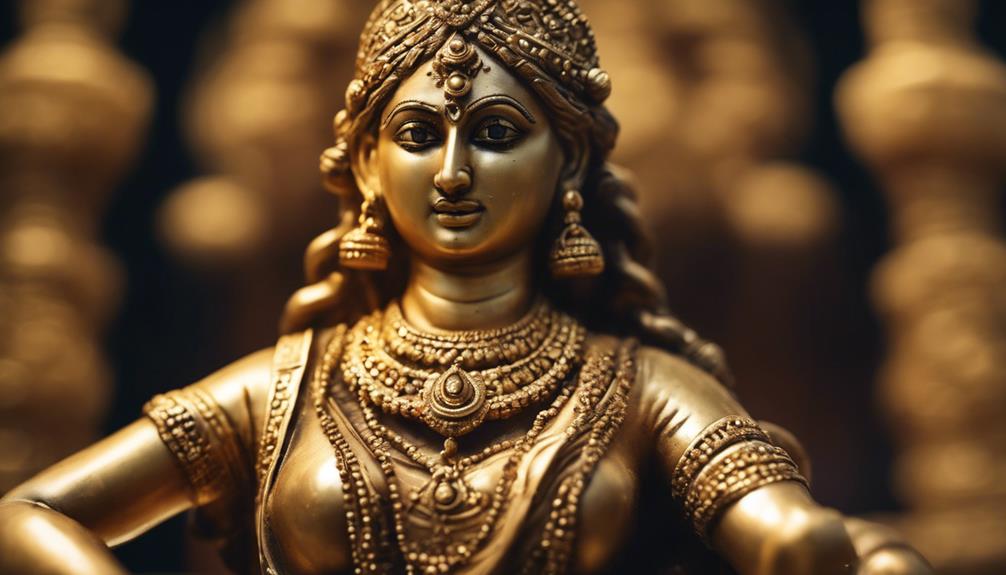
Nestled in Jabalpur, Madhya Pradesh, the Rani Durgavati Museum showcases a diverse collection of artifacts reflecting the region's rich history and culture. Named after the prominent historical figure Rani Durgavati, this museum offers visitors a fascinating glimpse into the heritage of Madhya Pradesh through its exhibits on archaeology, art, and local traditions.
Visitors can immerse themselves in the intricate artifacts that tell the story of Madhya Pradesh's past.
The museum provides a thorough view of the region's cultural evolution over the centuries.
Each exhibit is carefully curated to highlight the unique aspects of Madhya Pradesh's history and traditions.
The Rani Durgavati Museum serves as a cultural hub, preserving the essence of the region for generations to come.
Frequently Asked Questions
What Is the Hidden Gem of Madhya Pradesh?
A hidden gem in Madhya Pradesh is the intricate artwork displayed at the Madhya Pradesh Tribal Museum. Visitors can marvel at the mesmerizing stone carvings at the Sas-Bahu Temple, a lesser-known treasure in the region.
Additionally, the UNESCO World Heritage site Bhimbetka Rock Shelters offers a unique and historical experience for museum enthusiasts.
The architectural beauty and historical significance of the Sanchi Stupas also make them hidden gems in Madhya Pradesh's museum scene.
What Is the Famous Thing in Madhya Pradesh?
Madhya Pradesh is renowned for its iconic Khajuraho Group of Monuments, showcasing intricate temple carvings and erotic art.
The state's Bhimbetka Rock Shelters, a UNESCO World Heritage site, boast ancient cave paintings dating back to prehistoric times.
Additionally, Madhya Pradesh's wildlife sanctuaries like Kanha and Bandhavgarh National Parks are famous for their tiger population and diverse flora and fauna.
The state's vibrant tribal communities, traditional festivals, and spiritual sites further contribute to its fame as a cultural hub in India.
Which Is the Most Beautiful City in Madhya Pradesh?
Gwalior stands out as one of the most beautiful cities in Madhya Pradesh. Its regal history and architectural wonders, including the majestic Gwalior Fort, Jai Vilas Palace, and Sas-Bahu Temple, attract tourists worldwide.
The city's blend of ancient charm and modern vibrancy, nestled amidst panoramic views, make it a top destination for history and architecture enthusiasts. Its rich cultural heritage and iconic landmarks contribute to Gwalior's allure as a must-visit city in Madhya Pradesh.
Which Is the Most Visited Place in Madhya Pradesh?
The most visited place in Madhya Pradesh is the Khajuraho Group of Monuments. These temples, constructed in the 10th and 11th centuries, are renowned for their intricate sculptures and stunning architecture.
Drawing tourists globally, Khajuraho holds UNESCO World Heritage status and offers a unique glimpse into India's rich cultural and architectural heritage. Visitors flock to witness the exceptional craftsmanship and historical significance of these monuments, showcasing the artistic and spiritual expressions of the Chandela dynasty.
Conclusion
To sum up, the museums of Madhya Pradesh offer a treasure trove of hidden gems waiting to be discovered. From the State Museum showcasing the state's rich history to the Tribal Museum highlighting the diverse cultures of the region, visitors are sure to be astounded by the wealth of artifacts and exhibits on display.
Just imagine standing in awe before the intricate carvings of Gwalior Fort Archaeological Museum, transporting you back in time to a bygone era.
